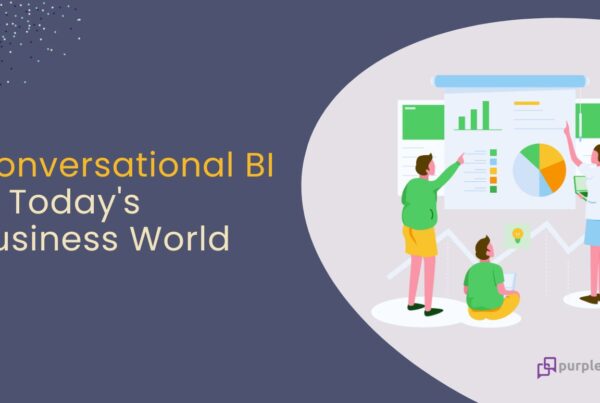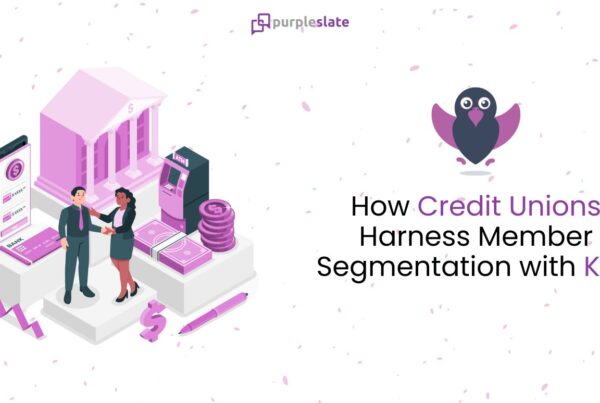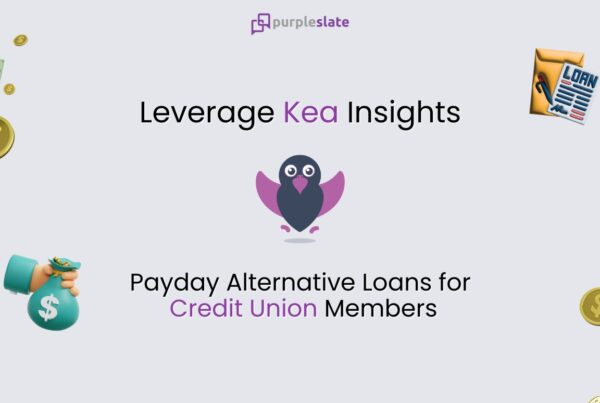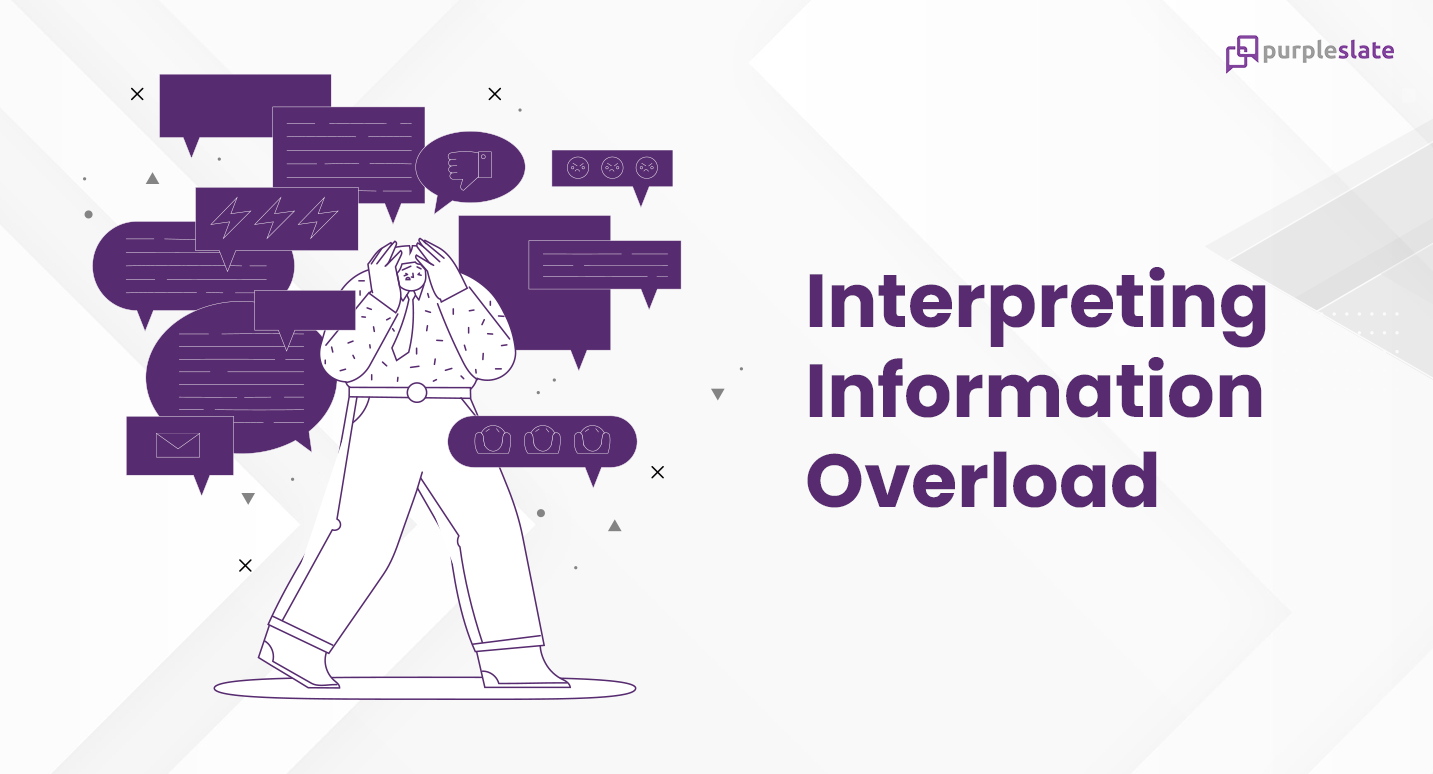
Introduction
While browsing through the vast space of the internet is when I encountered the term “Information Overload”. An interesting paradox in itself. All throughout our careers, business, and life in general we are told that information is power, this is the century of information war, and so on.
Intrigued by the term, as any inquisitive millennial would do, I looked up the term on Google “What is information overload”. Wading through the clutter of content thrown at me, I found the one that made sense to me the most. An HBR article subtly explains “information overload” to be the excess of information or insights thrown at an individual level for a specific question or query.
The fact to note here is that the information on information overload itself is overloaded with too much information. Irony indeed died a thousand deaths!
But, I can hear you think. What’s the problem with collecting data and analyzing the insights? How much information is too much information? Is there a light at the end of this long and dark tunnel, a solution to this predicament? Well, I will try to answer that and more through this blog.
Why is Information Overload a Torrid Affair?
With the data floodgates opened, people are overwhelmed with the amount of insights that rushes to them. Sometimes, in multiple formats – right from text heavy reports to interactive dashboards.
Global Datasphere is expected to reach 180 Zettabytes by 2025 – Statista
Businesses across the world calls this a treasure trove of information and it’s true to an extent. However, nobody likes to drown in their own treasure. That’s how the current world is functioning. Knowledge workers are reeling under the pressure of too much information overload. Then it should come as no surprise that 80% of the global workforce experience information overload.
The purgatory of infobesity (another term to denote information overload) is what awaits for businesses who fail to heed the problems presented by it.
- Employee Burnouts – Organizations who don’t have effective measures to battle this catastrophe will see their employees stressed and burnouts will be a frequent affair
- Boxed Creativity – Forget out of box thinking. Too much information will shut off creativity amongst the workforce
- Falling Productivity – Businesses want their workforce to do value added tasks, whereas a good part of their time goes foraging for information thereby affecting productivity
- Depreciating Bottom-Line – All of this snowballs into one effect, adversely affecting the business’ profit center
It’s time to say no-no to information overload. Is it? Only if things were that easy in the world. Before we proceed further, we need to understand how information overload is affecting the businesses at large. So, let’s deep dive into the modern world of data analytics to get an on-ground understanding.
The Sad Reality of Today’s Data Analytics
Talking to your data user, even your data analytics team will put the spotlight on how the modern world of data analytics is far from perfect. Three major pain points haunt the data user.
Death by metrics
Analyzing too much metrics, mind-numbing data, and loads of numbers just to derive at that one information required to make a decision.
Complex Information Access Process
The current set of information access systems need a team of technologists and engineers, query language knowledge, script executions, to access relevant insights.
Painful Delays in Decision Making
Research says that it takes 4-5 business days just to prepare a dashboard or a report as opposed to booking an Uber which takes only 2-3 minutes. All these delays have a domino effect on decision making.
There’s a simple and effective way out of this predicament. That method is driven by a core change in the way insights is consumed by end-users. But to reach there, we must take a small diversion to understand a bit about human psychology.
Should Human Psychology be a Part of Data Analytics?
Interesting question right? The broad answer is yes, because human psychology is part of everything that involves human beings. But in the context of knowledge workers and data analytics it boils down to one important fact.
How employees/research scholars/students/humans collect information.
Through the art of questioning. There is a chronological order in which humans seek out information and they follow 3 major steps as illustrated below.
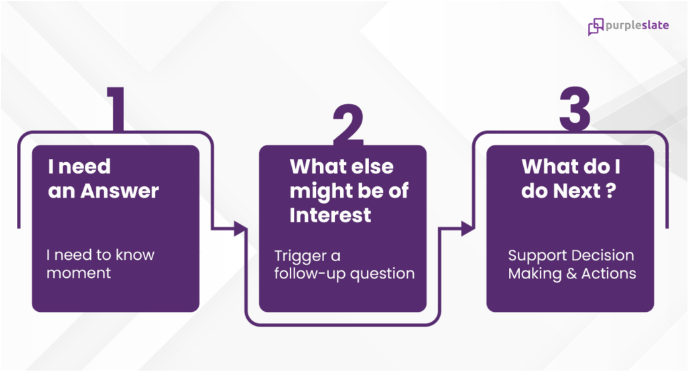
To explain this we need to analyze two scenarios.
Imagine a sales leader in the early 1960s (before the introduction of technology powered data analytics) going through an annual sales meeting. A typical question they ask their team will be;
“How’s the sales for this year?”
The answer to this question may something be like “We’ve achieved $2 million in Sales for this year”. An immediate follow-up question would be “How about last year?”. The response will throw insights on the difference and will influence the decision or strategy for the next year.
Traveling a little bit through time let’s land in the early reaches of 21st century, where a similar sales leader will be fighting his/her way out of a thousand metrics spread across 20 different dashboards to arrive at the same decision.
These two scenarios will help us arrive at the following conclusions.
- Humans seek out information in an intuitive fashion through questions and follow up questions
- They appreciate faster responses to momentary information needs as opposed to a lot of insights thrown at them
At this point, it all boils down to the most fundamental question. Is there a way to achieve both? Satisfying the momentary need for information with modern data analytics tools?
Conversational Insights – Marrying Data Analytics to Conversational AI
The evolution of modern day digital technologies provides us now with an opportunity to keep interactions with business data in the most intuitive interface possible – natural language – in the most ubiquitous interfaces. Be it on your phone, messaging apps, website, smart speakers, devices or any other medium that can support engaging, two way interactions.
For the digital native users of today, most of the information and utility needs are momentary. ‘I need this Information’, ‘I need to Answer’, ‘I need to Share’ or ‘I need to Communicate’ moments. Armed with the mobile devices, that are more powerful than the super computers till a few years back, users want to get instant access to information, to solve a problem, to produce a report, to respond to a situation or most importantly, to make a decision – all at this very moment.
There’s a reason as to why Gartner believes “that moving forward, the dashboards will be replaced with automated, conversational, mobile and dynamically generated insights customized to a user’s needs and delivered to their point of consumption.”
Interested to know why Conversational Insights is the future of business intelligence and how can it help businesses battle information overload? Check out our webinar

